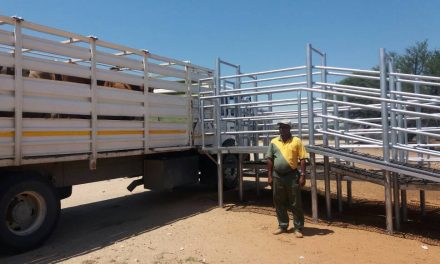
Quality leather from Tannery Industries

Oak barrels are used in the initial curing process of tanning and dying. This factory turns raw hides into tanned leather products in a variety of colours. (Photograph by Hilma Hashange)
Previously, the tannery’s typical output consisted of semi-cured products from bovine wet blue (full substance, grain-split, drop-split and nguni hair-on), sheep skin and bovine finished leather but has recently extended their curing process to include products like cattle hides, sheep skins, goat skins, game skins as well as doing contract tanning. All these products are now available at the tannery.
This is considered the first step of a long-term project which has been conceived with the help of AMA Future of Africa Association. “The main objective of this project is to expand production through the creation of an industrial district able to deliver several kinds of byproducts and finished goods,” said Armando Meneguzzo, President of Tannery Industries Namibia. He said the tannery plans on producing footwear; various upmarket products made from hair-on skins and gloves, amongst other products and will bear a Namibian brand name to symbolize that they are locally made.
The company currently employs 40 staff members but a further 2000 people will be employed once the facilities around the tannery are developed to include the full spectrum of tanning from raw hide to fine leather. Part of this expansion programme will also see a streamlining of production.
According to Meneguzzo, if government avails land, the company intends to build a village to provide housing for workers to avoid them long distance trips to and from work. He added that training courses will soon be offered to employees of the tannery to improve their skills.
“All these initiatives are going to allow the employment of a growing number of people contributing to the economic and social development of the entire area,” said Meneguzzo.
With two production divisions in Ondangwa and Witvlei, the tannery was set up as a joint venture partnership between Italian and Namibian investors and established in June 2010. The tannery produces finished leather products through advanced and environmentally friendly manufacturing techniques for the various stages of curing. A complete assembly of modern leather processing equipment and machinery allows for a versatile production and a wide-scoped product portfolio of diverse leather types. Its operations are based on the use of bovine hides, goat, sheep and game skins, all of which are sourced in Namibia and neighbouring countries.










































